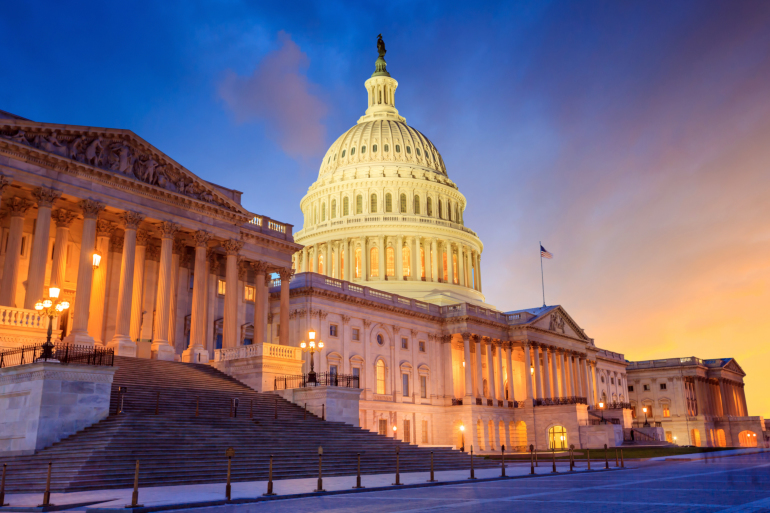Legal Update
Aug 10, 2020
President Trump Signs Four Executive Orders Providing or Extending Coronavirus Relief
Sign Up for our COVID-19 Mailing List.
Visit our Beyond COVID-19 Resource Center.
Seyfarth Synopsis: On August 8, 2020, President Trump issued an Executive Order and three Memoranda to his Cabinet and Executive Agency heads (collectively, the “Executive Orders”) that provide or extend COVID-19 relief to individuals and businesses. One Memorandum was issued to the Secretary of Labor, the Secretary of Homeland Security, and the Administrator of the Federal Emergency Management Agency (“FEMA”) (the “Disaster Relief Memorandum”) and provides for supplemental unemployment payments to certain eligible claimants at up to $400 per week until the earlier of when the $25 billion allocated by the President is depleted or December 6, 2020. The second Memorandum was issued to the Secretary of Treasury (the “Tax Memorandum”) and temporarily defers the collection and payment of certain payroll taxes from compensation paid between September 1, 2020 and December 31, 2020. A third Memorandum was issued to the Secretary of Education (the “Education Memorandum”) and extends student loan payment deferment and reductions of student loan interest rates to zero until December 31, 2020. The Executive Order (the “Housing Executive Order”) directs various Cabinet and Executive Agency heads to find means of limiting evictions and foreclosures.
Although none of the Executive Orders are currently operational, the constitutionality of these actions has been questioned, and legal challenges have been threatened and may be instituted, it is important for you to have a basic understanding of these actions.
Disaster Relief/Unemployment Insurance Benefits
As most employers and others are aware, the CARES Act provided a $600 per week federally funded unemployment compensation assistance to an eligible unemployed person, in addition to standard state unemployment benefits. That benefit expired July 31, 2020. The Disaster Relief Memorandum directs FEMA to provide benefits from the Department of Homeland Security’s Disaster Relief Fund and directs states to use their Coronavirus Relief Fund allocation to provide financial relief to unemployed Americans affected by COVID-19, principally through an up to a $400-per-week supplemental unemployment compensation benefit. The Disaster Relief Memorandum makes two significant changes in eligibility compared to the $600 supplemental benefit under CARES. First, the Memorandum requires that to be eligible, an individual must receive at least $100 per week in regular state unemployment compensation assistance (up from $1). Second, the Memorandum requires the individual to certify that his or her lost wages are attributable to disruptions caused by COVID-19. In addition, the funding for this new benefit is different than the funding under the CARES Act because the federal government will only pay for 75% of the costs associated with this benefit. State governments will be responsible for the remaining 25%, subject to an agreement between the federal government and the state with regards to the program and funding.
Payroll Tax Deferral
The Tax Memorandum directs the Secretary of Treasury to defer the withholding, deposit, and payment of the employee portion of social security tax (but not Medicare tax) on wages or compensation paid during the period of September 1, 2020, through December 31, 2020, if the employee’s wages or compensation payable during any biweekly payroll period are generally less than $4,000, calculated on a pre-tax basis, or the equivalent amount during other payroll periods. Amounts deferred will be without penalties, interest, additional amounts, or additions to tax. The Tax Memorandum directs the Secretary of Treasury to issue guidance to implement the Memorandum and to also find ways to eliminate the deferred tax entirely. It should be noted that the Tax Memorandum provides only for the deferral of the employee portion of social security tax and, in the event the Secretary of Treasury does not eliminate the deferred tax entirely, an affected employee will ultimately be required to pay any remaining deferred tax. However, until further guidance is issued, it is unclear how an employee would pay the deferred tax following the end of the deferral period.
Student Loan Payment Relief
The Education Memorandum directs the Secretary of Education to effectuate waivers of and modifications to the requirements and conditions of economic hardship deferments and provide such deferments as necessary to continue the temporary cessation of payments and the waiver of all interest on student loans held by the Department of Education until December 31, 2020. The Education Memorandum further provides that student loan borrowers may continue to make payments if they wish to do so.
Eviction Minimization
The Housing Executive Order directs certain members of the Cabinet to consider, identify, review, and take action necessary to minimize, to the greatest extent possible, residential evictions and foreclosures during the ongoing COVID-19 national emergency. President Trump directs the Secretary of Health and Human Services and the Director of the Centers for Disease Control and Prevention to consider whether any temporary halting of evictions for failure to pay rent are reasonably necessary to prevent further spread of COVID-19. President Trump directs the Secretary of the Treasury and the Secretary of Housing and Urban Development (“the “HUD Secretary”) to identify Federal funds that could be used to provide temporary financial assistance to renters and homeowners who are struggling to make monthly payments as a result of financial hardships caused by COVID-19. President Trump also directs the HUD Secretary to take action to promote the ability of renters and homeowners to avoid eviction or foreclosure, including by providing Federal funds to landlords. Finally, President Trump directs the Director of Federal Housing Finance Agency to consult with the Secretary of Treasury to review existing authorities and resources that may be used to limit evictions.
You can read the Executive Order and Memoranda here, here, here, and here.


